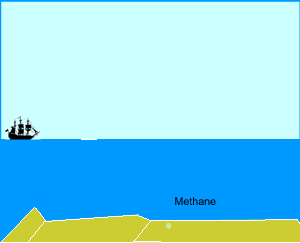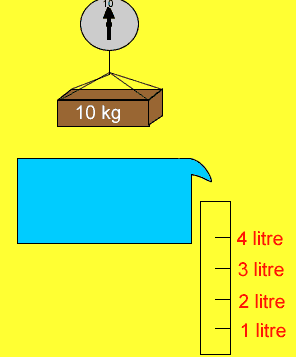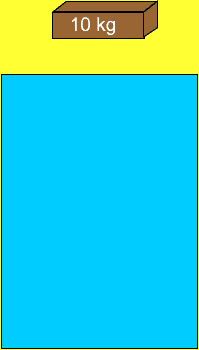
A ten kilogram brick is lowered into a tub of water.
If the density of water is 1g/cm3 what is the reading of the scale when the brick is fully submerged?
Does the brick lose mass when it is placed in water?
Solution


A barge floats on the surface of the water. It's dimensions are shown on the right. A horse jumps onto the barge and the barge is seen to sink a further 12cm.
a) Calculate the volume of the displaced water.
Solution
b) Calculate the weight of the horse.
Solution
